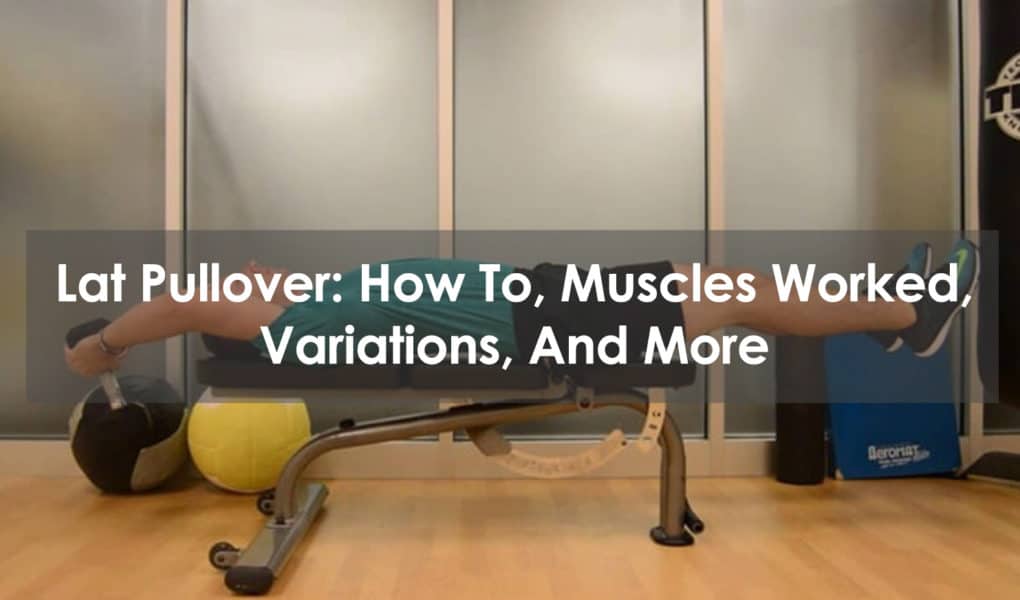When developed correctly, your lats can become some of the most prominent muscles in your body structure, adding not only aesthetic size but also strength to help with a range of movements and exercises.
There are plenty of exercises that target this part of your upper body, such as the lat pulldown or the inverted row, however, there is one that is sometimes overlooked; the lat pullover.
It’s a highly effective exercise that moves your lats through a fuller range of motion than other back exercises. We’re going to dive into all the benefits of the lat pullover, how to perform it correctly and what variations are available to you so that you’re equipped with all the knowledge to master this move.
Benefits of the Lat Pullover
The lat pullover – sometimes referred to as dumbbell pullovers or a straight arm pullover – is quite unique in that it targets both your back and chest muscles at the same time (more on that below). This makes it a pretty comprehensive upper body exercise that builds strength in several important areas.
The lat pullover also helps to improve core strength and stability. All of this, in turn, can actually help lower your risk of injury as you are strengthening the muscles around your spine and core. Plus, as you are lying down when performing these dumbbell pullovers, you are taking the strain off of your lower back that might otherwise be there during other exercises.
Likewise, the lat pullover can also help increase shoulder mobility, as the pullover action recruits your deltoids and the range of motion will loosen them up. There aren’t many exercises that will have your shoulders flexing through this plane of movement, making this an important exercise to include in your workouts.
Muscles Worked

As the name suggests, the primary muscles this exercise targets are your lats (latissimus dorsi), which are located on your back, and are actually the largest muscles on that part of your body.
As mentioned, the lat pullover is also a chest workout and this is because your pecs are a primary muscle in the movement as well. They work in conjunction with your lats to keep the weight stable and move it safely through the full range of motion.
Your abdominals become engaged as a secondary muscle during lat pullovers to keep your core stable, meaning that more of the muscles in your arms and upper back – like your triceps, deltoids, and rhomboids – can assist in the movement.
The dumbbell lat pullover really is an excellent upper body exercise, as it targets so many different muscle groups at once.
How to Perform the Lat Pullover
- Lie back on a flat bench with your feet on the floor and knees bent. With your arms straight, hold a dumbbell with both hands above your chest, grasping the top end of the dumbbell so that the other end drops between your arms.
- Engage your lats and lower your arms, keeping them straight, until the weight is behind and slightly below your head.
- Now, engage your chest muscles to raise your arms back up to the starting position. Repeat for 12-15 reps.
Tips
- Squeeze your lats at the bottom of the movement, and squeeze your chest muscles at the top. This ensures they are properly engaged.
- The starting position should see a very slight arch in your back and arms, but keep it minimal.
- Focus on pulling your belly button in toward your spine to ensure your core muscles are fully engaged.
- Breathe in as you lower the weight behind you, then breathe out as you bring it back up.
Mistakes to Avoid
- Don’t let your arms bend too much; the straighter they are, the more your arm muscles are engaged – there’s a reason it’s also referred to as the straight arm pullover!
- Likewise, ensure your back isn’t arching or bending too much. There will be a small, natural arch to it as you perform the movement but don’t let it become excessive.
- The risk for injury gets higher with the more weight you use, so consider starting out with a light weight to get familiar with the exercise and then build from there.
Lat Pullover Variations
You can perform dumbbell pullovers with two dumbbells instead of one, but ensure they’re a lighter weight. You hold a dumbbell in either hand with your palms facing toward your feet, or toward each other, depending on your preference, then perform the movement in the same way.
For more of a challenge, you can work one arm at a time while using two dumbbells, which allows you to really focus on your shoulder mobility.
You can also adjust the starting position so that just your upper back and shoulders are resting on the flat bench, with your feet still on the floor and your knees bent. This will mean your core muscles need to work even harder to keep your body stable.
You can even forego the flat bench altogether and perform lat pullovers while lying on the floor. The starting position is almost exactly the same except your knees will be pointed toward the sky.
Frequently Asked Questions
Is pullover chest or back?
As mentioned, it’s actually both. There can be some disagreement about whether this exercise targets your back or your chest but, when performed correctly, it engages muscles in both areas fairly equally.
By squeezing your lats at the lowest position of the move and squeezing your pecs at the top, both your back and chest are getting a good workout.
How do you target lats on pullovers?
The movement will naturally target your lats as a primary mover, but if you want to really focus on them, then slow the exercise down, even more, when you’re lowering the weight. This increases the time your lats are under tension, thus making them work harder.







